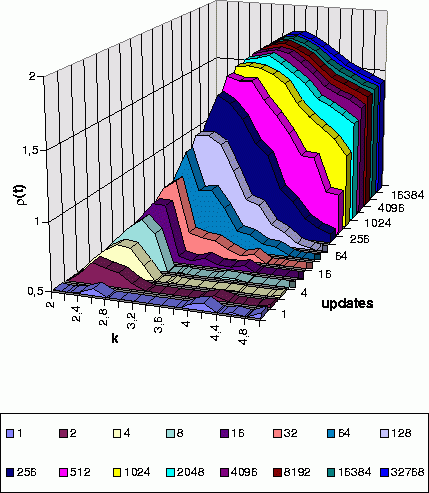Applications to economic models

Albert Diaz-Guilera
During the last years we have been collaborating with Prof. Fernando Vega-Redondo, an economist from the University of Alicante.
As physicists our contribution in this subject has been to apply concepts and tools widely used in nonequilibrium statistical mechanics, as those described above, to the study of the complex behavior of interacting economic agents.
We have studied a model of a socio-economic environment in a one-dimensional regular lattice, where each agent is characterized by a certain technological level. Depending on their neighbors' level, a given agent can decide to change her own level inducing collective events (avalanches). The probability distribution of the sizes of these avalanches has a power-law shape. Characterizing the evolution of the system by a conveniently chosen variable, we find that the system self-organizes in an optimal way in the critical region of parameter space. This behavior is robust, in the sense that it does not depend on the details of the microscopic dynamics of the agents, but just on certain constraints.
We are currently investigating other properties of this system. For instance, validity of scaling laws, profile roughness, limitation in the number of agents that are allowed to innovate (quenched disorder), higher dimensional lattices, effect of introducing costs in the decisions, ...
Right now, we are starting a line of research which concerns mainly the effect of the interaction paths between the agents. Up to now we have considered the agents in a perfect one-dimensional ring or in a square two-dimensional lattice. It is well known that slight changes in the interaction paths between the agents leads to completely novel macroscopic behaviors. Examples of new topologies are small-world networks, scale-free networks, random networks, and so on. Our interest is the study of how the dynamics is affected by this kind of topologies. On the one hand, we want to analyze the effect of a quenched (fixed in time) randomness, and on the other hand the effect of dynamical changes in the links between the agents. This dynamics can be either randomly or purpose generated. We believe that in these cases new macroscopic behaviors will emerge that can be very interesting from a practical point of view.
- A. Arenas, Universitat Rovira i Virgili
- P. M. Gleiser, Universitat de Barcelona
- M. Llas, Universitat de Barcelona
- C. J. Pérez, Universitat de Barcelona
- F. Vega-Redondo, Universitat d'Alacant



